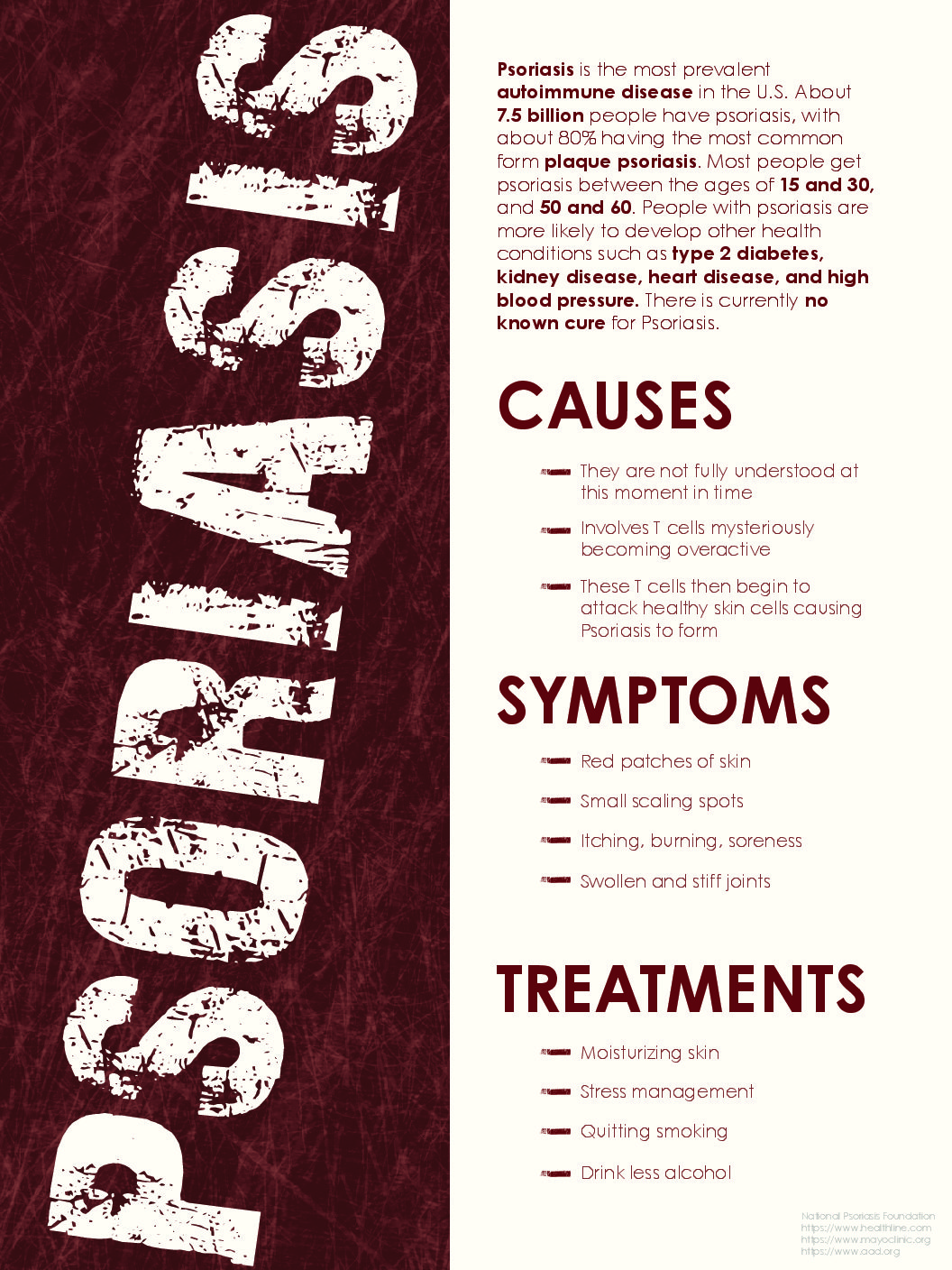By Shahneel Ahmed Psoriasis is a chronic disease that speeds up the life cycle of skin cells. Cells build up rapidly, forming scales and red patches on the surface of the skin. These can be itchy and painful. Psoriasis usually affects the elbows, knees, lower back, and/or scalp. It can however, affe...
By Shahneel Ahmed
Psoriasis is a chronic disease that speeds up the life cycle of skin cells. Cells build up rapidly, forming scales and red patches on the surface of the skin. These can be itchy and painful. Psoriasis usually affects the elbows, knees, lower back, and/or scalp. It can however, affect other areas of the body as well. Any type of psoriasis may affect the fingernails and/or toenails as well. When psoriasis affects the nails, there may be tiny dents, white, yellow, or brown discoloration under the nails, crumbing and rough nails, and lifting up of the nail.
Common symptoms are red patches of skin covered with thick, silvery scales, small scaling spots, dry and cracked skin that may bleed, swollen and stiff joints, itching, burning, and soreness. Psoriasis is not contagious and its lesions are not infectious. Most types of psoriasis go through cycles. Psoriasis may flare-up for a few weeks to months, then go into remission and can sync to the seasons.
Plaque psoriasis is the most common form in which the lesions appear as raised, red patches covered with a silvery-white buildup of dead skin cells. These are often itchy and painful. Guttate psoriasis involves small, dot-like lesions that are pink in color. This type of psoriasis usually starts in childhood or young adulthood and is the second-most common type. Guttate psoriasis can be triggered by a strep infection.
Inverse psoriasis develops in areas where skin touches skin, such as the armpits, genitals, and crease of the buttocks. It causes smooth, red patches of skin that look raw, sore and/or painful skin, and shows little to none silvery-white coating. Many people affected by inverse psoriasis have another type of psoriasis somewhere else on their body. Pustular psoriasis causes white pustules surrounded by red skin. The pus consists of white blood cells. Although pustular psoriasis can occur on any part of the body, it most often occurs on the hands and feet. Erythrodermic psoriasis is a severe form of psoriasis that can cover one’s entire body with a red, peeling rash that itches and burns. This is the least common type of psoriasis.
Lastly, psoriatic arthritis occurs when psoriasis affects the joints. Psoriatic arthritis is more likely to occur with severe psoriasis. Symptoms include swollen and tender joints, heel pain, swelling on the back of the leg, and stiffness in the morning that subsides throughout the day. The cause of psoriasis is not completely understood; however, it may be related to a problem with the immune system. Triggers for psoriasis include infections, skin injuries, stress, smoking, heavy alcohol consumption, vitamin D deficiency, and certain medications.
Although there is no cure for psoriasis, there are ways to manage and control its symptoms. Management and control of psoriasis involves learning and avoiding triggers, living a healthy lifestyle, complying to a good skin care routine, moisturizing, and using medication when necessary. Additionally, avoiding smoking and managing stress can also help to manage psoriasis.

